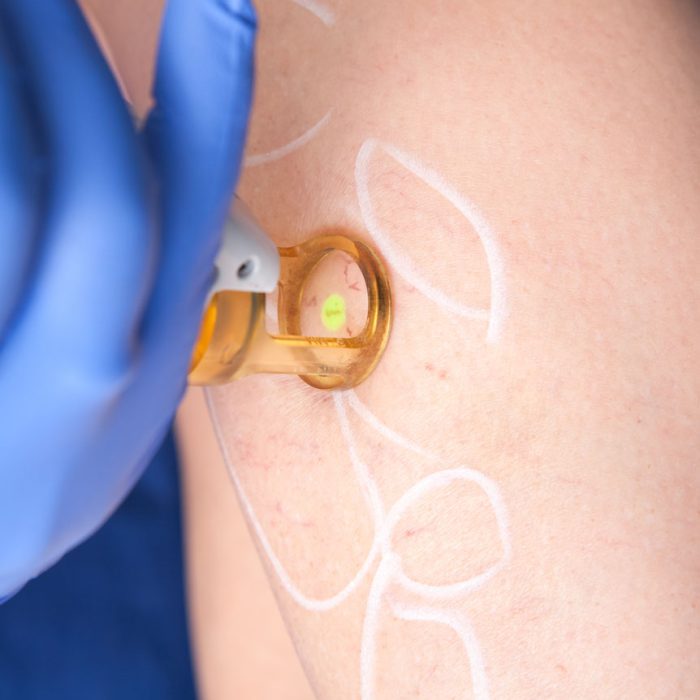Table of Contents
ToggleSpider Veins and Aging: A Scientific Overview and Preventive Measures
Spider veins, also known as telangiectasia, are small, dilated blood vessels that appear as a web-like pattern on the surface of the skin. These veins often manifest as red, blue, or purple lines, commonly found on the legs and face. The occurrence of spider veins increases with age due to various physiological changes in the body. This article provides a scientific examination of the relationship between aging and the development of spider veins, along with preventive measures to reduce their appearance.
The Physiological Changes Associated with Aging
Aging is accompanied by numerous physiological changes that directly impact the health and functionality of the vascular system. The walls of blood vessels are composed of endothelial cells that deteriorate and weaken over time. These changes include a reduction in the production of collagen and elastin, two critical proteins responsible for maintaining the strength and flexibility of both blood vessels and skin.
The Role of Collagen and Elastin
Collagen and elastin are the primary structural proteins in the walls of blood vessels and skin. Collagen provides rigidity and structure to the veins, while elastin allows them to return to their original shape. As people age, the production of these proteins gradually decreases, leading to weakened and thinner blood vessel walls. This weakness creates a predisposition for the vessels to dilate, resulting in the formation of spider veins.
Decreased Blood Flow and Hormonal Changes
As aging progresses, blood flow throughout the body decreases, often due to reduced physical activity, hormonal changes, and increased arterial stiffness. Hormonal fluctuations, particularly during menopause, can have a profound impact on the vascular system. The reduction in estrogen levels, a hormone that helps maintain the strength of blood vessel walls, can lead to the dilation of veins and the development of spider veins.
Pressure Accumulation in Superficial Veins
With advancing age, the vascular system may lose its efficiency in transporting blood from superficial veins to deeper, larger veins. This inefficiency can result in pressure buildup within the superficial veins, causing them to dilate and form spider veins. This issue is particularly common in individuals who spend extended periods standing or sitting.

Preventive Measures to Avoid Spider Veins
While aging is inevitable, several preventive measures can help maintain the health of your veins and reduce the risk of developing spider veins:
1. Regular Physical Activity
– Exercise: Regular physical activity, especially aerobic exercises like walking, running, and cycling, can improve circulation and reduce pressure on the veins.
– Stretching and Movement: If your job requires prolonged sitting or standing, take regular breaks to move and stretch your legs to improve blood flow.
2. Healthy Diet
– Fiber and Antioxidants: Consuming a diet rich in fruits, vegetables, and whole grains can support vascular health.
– Vitamins C and E: These vitamins help in the production of collagen and elastin, essential for vascular health. Foods like citrus fruits, berries, nuts, and leafy greens are excellent sources.
3. Weight Management
– Maintain a Healthy Weight: Excess weight can put additional pressure on your blood vessels, increasing the risk of spider veins. Keeping your weight within a healthy range helps reduce this pressure.
4. Wearing Appropriate Clothing
– Compression Stockings: Wearing compression stockings can prevent blood from pooling in superficial veins and reduce the risk of spider veins.
– Avoid Tight Clothing: Tight clothing, especially around the waist and legs, can restrict blood flow and contribute to the formation of spider veins.
5. Sun Protection
– Use Sunscreen: Applying sunscreen with an appropriate SPF protects your skin and blood vessels from sun damage.
– Wear Protective Clothing: When exposed to the sun for extended periods, wear clothing that covers your skin to prevent damage.
6. Hormonal Management
– Consult with a Physician: If you are undergoing hormonal changes, such as during menopause or using hormone replacement therapy, consult your doctor about options that may affect your vascular health.
7. Avoid Unhealthy Habits
– Quit Smoking: Smoking can damage your blood vessels and increase the risk of spider veins. Quitting smoking improves overall vascular health.
8. Maintain Proper Posture
– Avoid Prolonged Sitting or Standing: Regularly change your body position and maintain good posture to prevent pressure buildup in your leg veins.
Spider veins are a common result of the natural aging process, primarily due to changes in the structure and function of blood vessels. Decreased collagen and elastin production, reduced blood flow, hormonal changes, and pressure accumulation in superficial veins are significant contributors to the development of these veins as we age. Understanding the scientific basis of these processes can aid in developing effective preventive strategies. By adopting the preventive measures outlined above, you can reduce the risk of developing spider veins and maintain overall vascular health, enhancing your quality of life as you age.
Conclusion
It is important for people considering skin tag removal in plano , laser hair removal in plano ,microneedling in plano, Hydrafacial in plano, Microdermabrasion plano, Laser electrolysis plano, Nail Fungus plano, Rosacea Treatment in plano, Spider Vein Removal plano, Wrinkle Reduction in plano, Botox in plano, Hifu in plano, to undergo a full consultation with a qualified doctor or cosmetologist – Aesthetician Nasrin – to assess their suitability for this procedure and discuss their .
No comment yet, add your voice below!